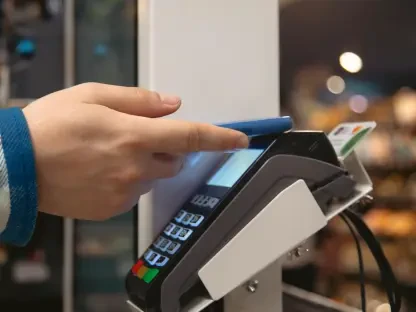The financial landscape is undergoing a significant transformation with the advent of stablecoins. These digital currencies, designed to maintain a stable value, are gaining traction and could potentially revolutionize the way we conduct transactions. As stablecoins continue to grow in value and popularity, the question arises: will they soon replace traditional payment methods? Stablecoins have rapidly emerged as a significant player in the global financial system. In recent months, their value has surged by $30 billion, underscoring their increasing importance. These digital currencies offer a streamlined, peer-to-peer transaction model that could reduce the costs and complexities associated with traditional payment methods. By eliminating the need for intermediaries, stablecoins have the potential to simplify transactions and make them more efficient.
The Evolution of Traditional Payment Methods
Payment methods have come a long way from the days of cash transactions. Over time, we have seen the rise of credit and debit cards, followed by the advent of digital wallets. While these methods have indeed made transactions more convenient for consumers, they often involve complex and costly processes that are not always visible to the end user. Traditional payment transactions typically require multiple intermediaries, each of whom charges a fee. These fees are initially borne by merchants but are often passed on to consumers, increasing the overall cost of goods and services. This traditional system has inherent inefficiencies that have prompted the search for more straightforward and cost-effective solutions, sparking interest in alternatives such as stablecoins.
With the advent of digital wallets and online payment systems, one might assume we have reached the pinnacle of transactional efficiency. However, the behind-the-scenes mechanics of these systems involve several steps and stakeholders that add layers of complexity and cost. For example, when you swipe a credit card at a store, several entities, including the acquiring bank, payment processor, and card network, get involved, each taking a cut of the transaction. This intricate ballet adds time and expense, creating a scenario ripe for disruption by emerging technologies. As consumers and businesses increasingly seek more streamlined and efficient methods, stablecoins offer an alluring promise of simplicity and cost savings.
Innovations in Financial Technology
The rise of distributed ledger technology (DLT), including blockchain, has paved the way for significant innovations in the financial sector. Stablecoins are one of the key applications of this technology. By combining the stability of fiat money with the security and efficiency of blockchain transactions, stablecoins are poised to revolutionize retail payments. DLT offers secure, immediate transaction processing, which could make stablecoins a more attractive option for both consumers and businesses. Blockchain technology provides a decentralized ledger that is secure and transparent, eliminating the need for a central authority and reducing the risks of fraud and manipulation. This makes blockchain a compelling foundation for stablecoins and their potential to reshape the payments industry.
Innovations in financial technology continue to expand the boundaries of what is possible in transactions and payments. Take, for instance, the concept of smart contracts, which are programs that execute automatically when certain conditions are met. Smart contracts can facilitate complex transactions, such as escrow services, without needing third-party intermediaries, further demonstrating the potential of blockchain technology. The fusion of these advanced technologies with stablecoins opens up many possibilities, from reducing settlement times to decreasing transaction costs, and providing enhanced security. As we witness the increasing adoption of these technologies, the financial landscape is set for dramatic shifts toward more efficient and cost-effective systems.
The Potential of Stablecoins
Stablecoins have the potential to modernize the payment process by reducing dependency on traditional payment networks and service fees. By minimizing the role of intermediaries, stablecoins could streamline transactions and make them more cost-effective. This is particularly relevant for cross-border payments, which are often subject to high fees and lengthy processing times. Stablecoins could offer a more efficient and affordable alternative for international transactions, benefiting both consumers and businesses. With reduced transaction costs and faster processing times, stablecoins could democratize access to financial services, providing new opportunities for economic participation and growth across different regions.
As the world becomes increasingly interconnected, the demand for efficient and low-cost cross-border payment solutions continues to rise. Traditional payment methods, involving hefty fees and extended processing periods, are often prohibitive, particularly for small businesses and individual consumers. Stablecoins offer a promising solution by providing near-instantaneous transactions with significantly lower fees. This potential to reduce financial friction extends beyond international transactions to everyday retail payments, streamlining the purchase process and reducing costs. By embracing stablecoins, the global financial ecosystem could become more inclusive and accessible, fostering innovation and economic growth.
Current Limitations and Challenges
Despite their potential, stablecoins are still in the early stages of integration into mainstream settlement processes. Building a user-friendly infrastructure and establishing robust consumer protections are critical challenges that need to be addressed. Additionally, while stablecoins aim to facilitate peer-to-peer transactions, they still require wallet providers and exchanges to function effectively. These intermediaries play essential roles in transaction facilitation and security, highlighting the need for a balanced approach to innovation and regulation. Ensuring the security and reliability of these systems is paramount as they evolve and gain wider adoption, and this will require collaborative efforts from various stakeholders in the financial ecosystem.
Another significant challenge is the need to develop regulatory frameworks that can adequately address the unique features and potential risks of stablecoins. Regulatory bodies must balance encouraging innovation with protecting consumers and maintaining financial stability. This involves addressing issues related to anti-money laundering (AML) and know your customer (KYC) regulations, as well as ensuring technology solutions are resilient against emerging threats such as quantum computing. Additionally, fostering user trust and confidence in stablecoin systems will be crucial for their widespread adoption. Education and clear communication about the benefits and risks of stablecoins will play a vital role in overcoming these challenges and promoting a more inclusive financial system.
Benefits and Risks
The efficiency and cost-effectiveness of stablecoins could enhance transaction processes for both customers and merchants. Faster payments and operational savings are among the potential benefits. However, there are also risks to consider. Volatility in transaction fees and instances of depegging highlight the need for robust stabilization mechanisms. Financial stability concerns arise from the potential destabilization of capital flows between traditional banks and stablecoins, as well as within the stablecoin market itself. Regulatory and security issues, including compliance with anti-money laundering (AML) and know your customer (KYC) regulations, are also critical considerations.
For stablecoins to realize their potential benefits while mitigating risks, robust risk management strategies are essential. This includes mechanisms to ensure stablecoins maintain their peg to fiat currencies, thereby providing the stability they promise. Financial institutions and regulators must collaborate to develop frameworks that address potential market disruptions and maintain overall financial stability. Furthermore, advancements in technology must continue to address security challenges, ensuring that stablecoin transactions are secure and resilient against evolving threats. Balancing these considerations will be key to the successful integration of stablecoins into the global financial system and their potential to revolutionize payment processes.
Responses to Challenges
Regulatory bodies around the world are recognizing the potential and risks associated with stablecoins and are crafting frameworks to regulate the market. Technological solutions, such as zero-knowledge proof technology and Layer 2 blockchain solutions, aim to enhance privacy and efficiency while ensuring compliance with regulations. These innovations are crucial for addressing the challenges and realizing the full potential of stablecoins. By fostering a collaborative environment between regulators, technology developers, and financial institutions, it is possible to create a robust framework that supports the safe and efficient use of stablecoins in the financial system. Ensuring that regulatory frameworks keep pace with technological advancements will be crucial for managing risks while promoting innovation.
As the stablecoin market evolves, continuous dialogue and collaboration between all stakeholders will be essential. This includes addressing emerging concerns, such as the impact of quantum computing on cryptography and ensuring that stablecoin systems adhere to the highest standards of security and privacy. Innovations in privacy-enhancing technologies, such as zero-knowledge proofs, can help address regulatory requirements while preserving user privacy. Likewise, Layer 2 solutions can improve scalability and transaction speeds, making stablecoins more practical for everyday use. By proactively addressing these challenges, the financial ecosystem can leverage stablecoins to create a more efficient, secure, and inclusive system for all participants.
Future Prospects
The financial landscape is witnessing ongoing innovations, with initiatives like PayPal’s US dollar-pegged stablecoin and Société Générale’s stablecoin projects leading the way. Regulatory advancements in regions such as the UK, Singapore, and Hong Kong reflect the seriousness with which financial systems are approaching stablecoin adoption. The future of stablecoin payments depends on sustained innovation, adaptive regulation, and market readiness. If these factors align, stablecoins could redefine financial transactions and potentially replace traditional payment methods. As these initiatives progress, it will be essential to monitor their impact on the broader financial system and ensure that they contribute to a more efficient and inclusive global economy.
Looking ahead, the prospects for stablecoins are promising but will require a concerted effort from all stakeholders. Continued investment in technological innovation, alongside adaptive and forward-thinking regulation, will be critical in shaping the future landscape of financial transactions. Businesses and consumers alike stand to benefit from the increased efficiency, lower costs, and enhanced security that stablecoins promise. However, realizing this potential will require overcoming significant challenges related to infrastructure, regulation, and market acceptance. Ultimately, the degree to which stablecoins can replace traditional payment methods will depend on their ability to address these challenges and deliver on their promises in a rapidly evolving financial environment.
Conclusion
The advent of distributed ledger technology (DLT), notably blockchain, has catalyzed major innovations in the financial realm. Stablecoins, which meld the stability of fiat currency with the security and efficiency of blockchain transactions, are a prime manifestation of this progress. By offering secure and instant transaction processing, DLT has the potential to make stablecoins highly appealing to both consumers and enterprises. Blockchain’s decentralized ledger provides security and transparency, eliminating the need for a central authority and mitigating the risks of fraud and manipulation. This renders blockchain an ideal foundation for stablecoins, which hold the promise of transforming the payments industry.
Continued advancements in financial technology are pushing the boundaries of transactional and payment possibilities. For example, smart contracts—self-executing programs—enable complex transactions like escrow services without relying on third-party intermediaries, showcasing blockchain technology’s capabilities. Integrating these advanced technologies with stablecoins can reduce settlement times, lower transaction costs, and bolster security. As these technologies gain traction, the financial sector is poised for significant shifts toward more efficient and cost-effective systems.









